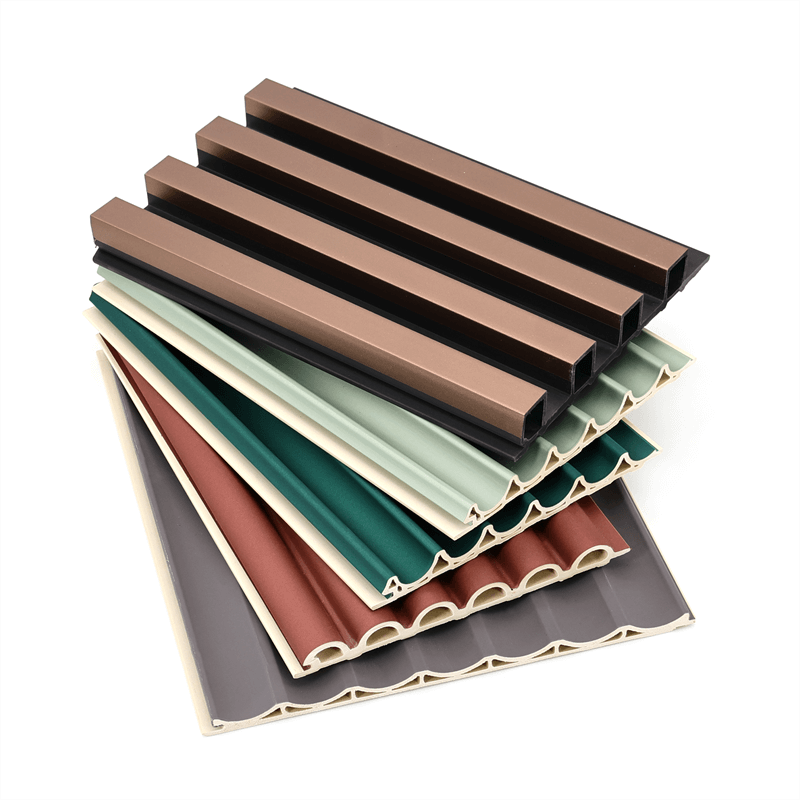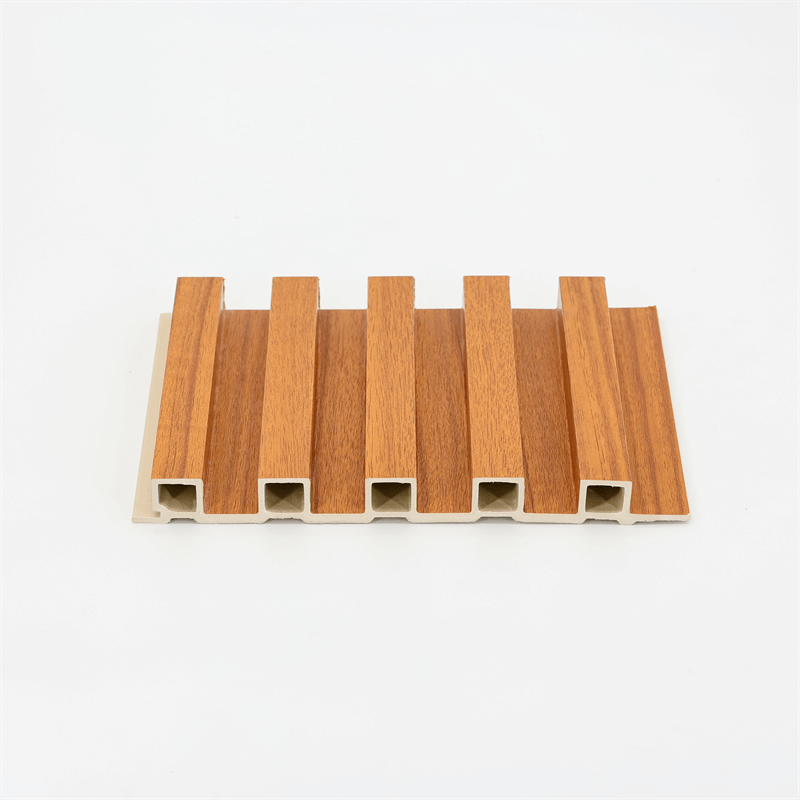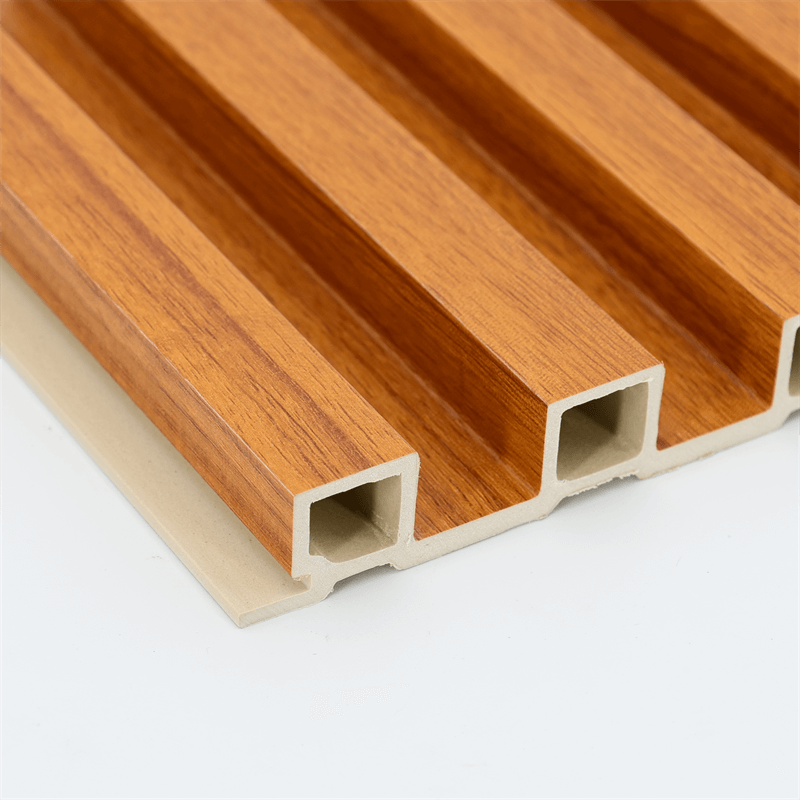
In recent years, the interior design industry has witnessed a revolution with the emergence of wall panel WPC (Wood Plastic Composite).
This innovative material has rapidly gained popularity among designers, homeowners, and architects for its unique combination of aesthetics, functionality, and sustainability.
In this article, we will explore why wall panel WPC is revolutionizing interior design, focusing on its key advantages, its impact on the industry, and considerations for manufacturers, suppliers, and consumers.
I. Understanding Wall Panel WPC: A Game-Changer in Interior Design
The Composition of Wall Panel WPC Wall panel WPC is a composite material made by combining wood fibers and thermoplastics, such as polyethylene or polypropylene.
This blend results in a versatile material that replicates the natural look and feel of wood while offering enhanced durability and resilience.
By utilizing recycled materials and minimizing waste, WPC panels contribute to sustainable design practices, making them an appealing choice for environmentally conscious consumers.
Aesthetics and Design Versatility One of the primary reasons for the popularity of wall panel WPC is its ability to mimic the appearance of natural wood.
With a wide range of finishes, textures, and colors available, WPC panels offer design versatility, allowing designers and homeowners to achieve various styles, from rustic to contemporary.
The panels can be easily customized to suit different interior spaces, creating unique and visually appealing environments.

II. The Advantages of Wall Panel WPC in Interior Design
Durability and Longevity Wall panel WPC is highly durable and resistant to wear, fading, and scratching.
Unlike traditional wood materials, WPC panels do not warp, crack, or splinter, ensuring their longevity and preserving their original aesthetics over time.
This durability factor reduces the need for frequent replacements, making WPC panels a cost-effective and sustainable choice for interior design projects.
Moisture Resistance One of the key advantages of wall panel WPC is its resistance to moisture.
Unlike natural wood, WPC panels do not absorb water, making them suitable for high-humidity areas such as bathrooms and kitchens.
Their moisture-resistant properties also make them less prone to mold and mildew growth, ensuring a healthier indoor environment.
Easy Installation and Maintenance Wall panel WPC is designed for easy installation, thanks to its lightweight nature and interlocking systems.
This simplifies the installation process, reducing time and labor costs. Additionally, WPC panels require minimal maintenance.
Regular cleaning with mild soap and water is usually sufficient to keep the panels looking fresh and vibrant.
The absence of painting, staining, or sealing requirements further enhances their appeal for both homeowners and professionals.
Eco-Friendliness and Sustainability As the demand for sustainable building materials grows, wall panel WPC stands out as an eco-friendly solution.
By utilizing recycled wood fibers and thermoplastics, WPC panels contribute to reducing waste and conserving natural resources.
Furthermore, the manufacturing process of WPC panels consumes less energy and generates fewer greenhouse gas emissions compared to traditional wood products.
This combination of durability, aesthetics, and sustainability makes WPC panels an attractive choice for environmentally conscious interior design projects.
III. The Impact of Wall Panel WPC on the Interior Design Industry
Design Possibilities and Flexibility The introduction of wall panel WPC has expanded the creative possibilities for interior designers.
With its ability to replicate the appearance of wood, WPC panels enable designers to incorporate natural elements into their designs without compromising on durability and maintenance concerns.
The wide range of finishes and textures available also allows for innovative and unique design concepts, giving designers the freedom to bring their vision to life.
Cost-Effectiveness Wall panel WPC offers a cost-effective alternative to traditional wood materials.
While the initial price of WPC panels may be slightly higher, the long-term cost savings due to their durability and low maintenance requirements make them a financially viable option.
Homeowners and designers can create stunning interior spaces without compromising on quality or breaking the budget.
Supplier and Manufacturer Opportunities The rising demand for wall panel WPC has created opportunities for manufacturers and suppliers in the interior design industry.
Manufacturers can leverage their expertise in producing high-quality WPC panels to cater to the growing market.
Suppliers play a crucial role in connecting manufacturers with designers and homeowners, ensuring the availability of a wide range of WPC panel options at competitive prices.

IV. Considerations for Manufacturers, Suppliers, and Consumers
Quality and Reputation For manufacturers and suppliers, maintaining high-quality standards is essential to build a reputation in the market.
Investing in research and development to improve the performance and aesthetics of WPC panels will help manufacturers stay ahead of the competition.
Suppliers should carefully select reliable manufacturers to ensure consistent quality and customer satisfaction.
Pricing and Affordability Pricing plays a significant role in the widespread adoption of wall panel WPC.
Manufacturers and suppliers should strive to offer competitive prices without compromising on quality.
By optimizing production processes and sourcing cost-effective materials, they can make WPC panels more accessible and affordable for consumers, driving further market growth.
Consumer Education As the awareness and popularity of wall panel WPC continue to grow, consumer education becomes vital.
Manufacturers, suppliers, and industry professionals should provide accurate and comprehensive information about the benefits, installation process, and maintenance requirements of WPC panels.
This will empower consumers to make informed decisions and fully capitalize on the advantages of this revolutionary material.
Wall panel WPC has revolutionized interior design by combining the natural aesthetics of wood with enhanced durability, moisture resistance, and sustainability.
With its numerous advantages and design versatility, WPC panels have become a game-changer in the industry, offering homeowners and designers a cost-effective and eco-friendly alternative to traditional wood materials.
As manufacturers, suppliers, and consumers embrace the potential of wall panel WPC, the interior design landscape continues to evolve, creating innovative and visually stunning spaces that stand the test of time.
